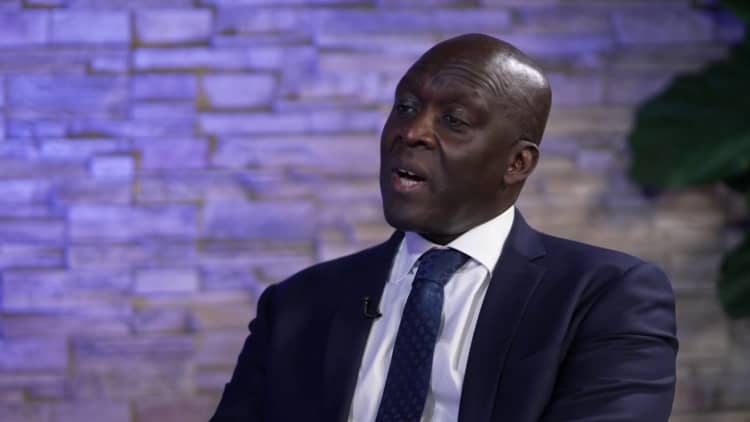Members of Sri Lanka’s National People’s Power Party shout slogans as they protest against the government’s debt restructuring plan affecting the income of the pension funds, in Colombo on July 31, 2023.
Ishara S. Kodikara | AFP | Getty Images
Developing countries paid a record $443.5 billion in 2022 to service their public debt as global interest rates surged, according to the World Bank.
This was a 5% increase over the previous year — and things could get worse for the world’s poorest.
Every quarter that interest rates stay high results in more developing countries becoming distressed.
Indermit Gill
Chief economist, World Bank Group
The cost of servicing debt for the world’s 24 poorest nations could surge by as much as 39% in 2023 and 2024, according to the World Bank’s latest International Debt Report released Wednesday.
“Record debt levels and high interest rates have set many countries on a path to crisis,” said Indermit Gill, the World Bank Group’s chief economist and senior vice president for development economics.
“Every quarter that interest rates stay high results in more developing countries becoming distressed — and facing the difficult choice of servicing their public debts or investing in public health, education, and infrastructure,” he added.
Underscoring the gravity of the situation, the World Bank said there were 18 sovereign defaults in 10 developing countries in the last three years — more than the total in the previous two decades combined. The list includes defaults in Ghana, Sri Lanka and Zambia, among others.
There are 28 countries eligible to borrow from the World Bank’s International Development Association — a facility geared to help the world’s poorest nations. They are now at high risk of debt distress, while 11 are already in distress, the World Bank said in the report.
Surging interest rates globally and a strong U.S. dollar have made it more expensive for indebted nations to service their loans. More than a third of the external debt of developing nations involves variable interest rates that are vulnerable to sudden fluctuations, the World Bank said.
Multilateral bank financing
Multilateral banks, including the World Bank and the International Monetary Fund, have stepped up efforts to help developing countries refinance their debt as new financing options from private sources shrivel.
In 2022, private creditors received $185 billion more in repayments than they issued in loans in developing countries — the first time since 2015 that this reversal has occurred, the report said.

The World Bank said multilateral banks provided $115 billion in new forms of low-cost financing for developing countries in 2022 — with about half from the World Bank itself.
Through its International Development Association, the World Bank said it has provided $16.9 billion more in new financing for these countries last year than it received in repayments. This is nearly three times the comparable number a decade ago.
U.S. Treasury Secretary Janet Yellen has made debt relief for developing nations a cornerstone in her engagement with world leaders.
She has urged international creditors such as China to provide some form of urgent debt relief to developing countries facing default, arguing this would benefit the global economy.


